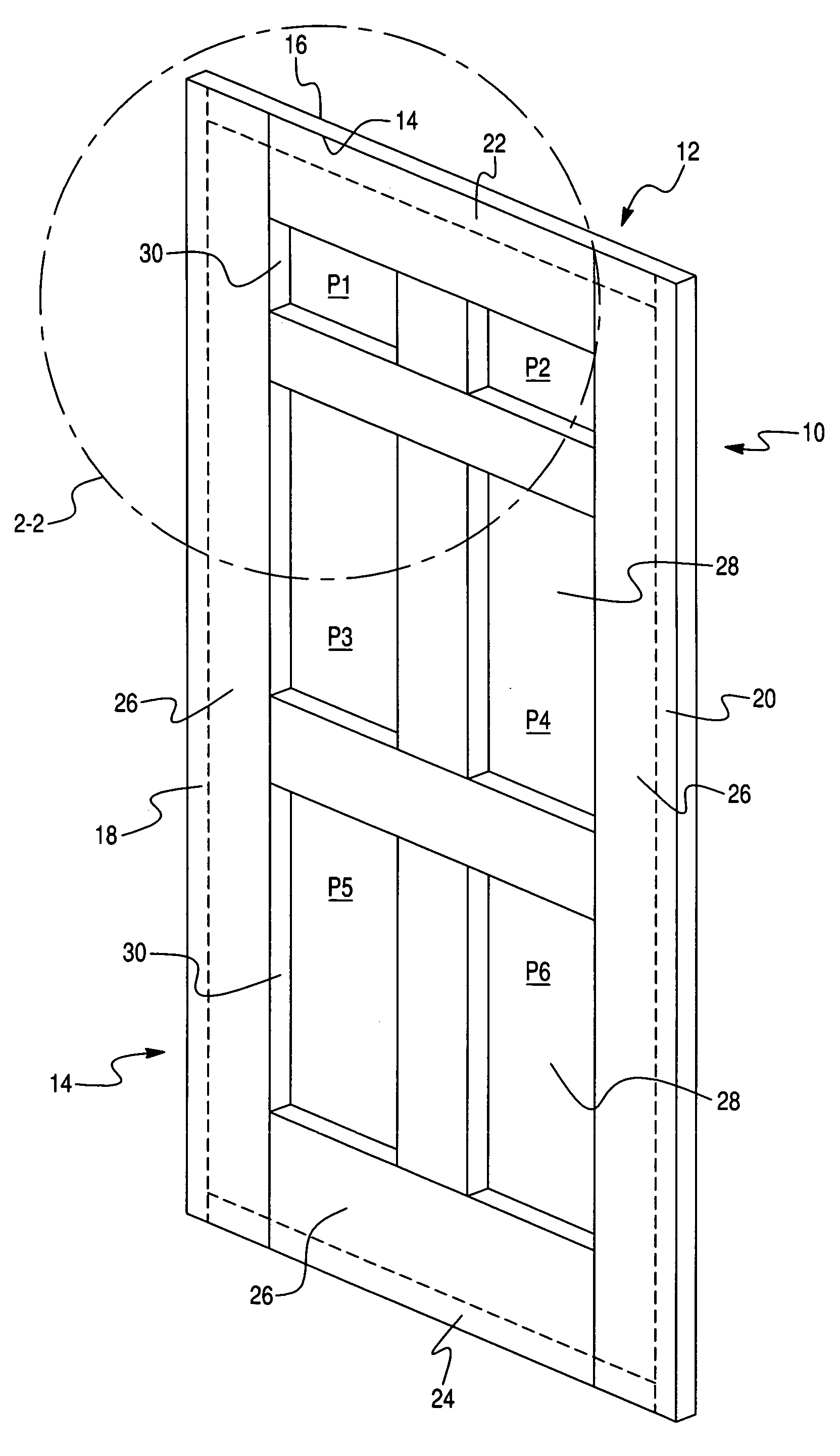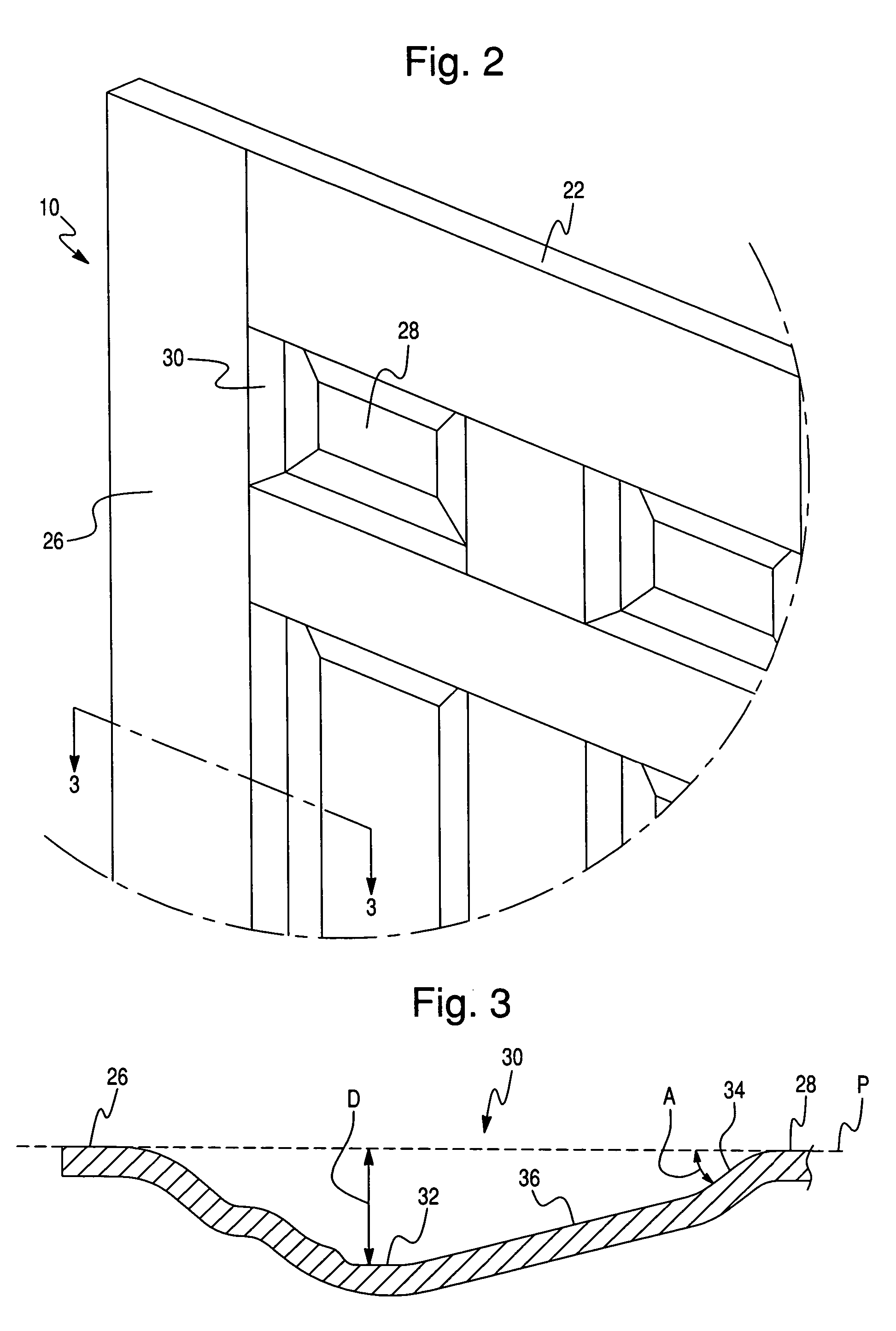Method and apparatus for creating an image on an article, and article resulting therefrom
a technology of image and article, applied in the field of printing an image on an object, can solve the problems of lack of natural wood, high cost of natural wood items, and inability to achieve the appearance of natural wood, and achieve the effect of enhancing natural wood
- Summary
- Abstract
- Description
- Claims
- Application Information
AI Technical Summary
Benefits of technology
Problems solved by technology
Method used
Image
Examples
Embodiment Construction
[0051] The present invention is directed to a method and apparatus for creating an image on an article, such as a simulated wood grain pattern on a door skin, using an ink jet printer. Any object that can be printed using ink jet printing is suitable for the disclosed invention. Preferably, the printed object includes hard rigid surfaces, although other surfaces such as wood veneer or paper overlaid wood composites, are also suitable.
[0052] The printed object preferably comprises a three-dimensional object, such as one or more of furniture, a fixture and / or a fitting, and / or a fixed construction. The surface of such an object preferably includes at least one recess and / or projection. Prior attempts to print on uneven surfaces using an ink jet technique achieved unacceptable results due to the variation in distance of the substrate from the printhead. However, the disclosed printing technique achieves images having surprisingly high quality.
[0053] Examples of suitable objects to be...
PUM
| Property | Measurement | Unit |
|---|---|---|
| diameter | aaaaa | aaaaa |
| diameter | aaaaa | aaaaa |
| constant distance | aaaaa | aaaaa |
Abstract
Description
Claims
Application Information
 Login to View More
Login to View More - R&D
- Intellectual Property
- Life Sciences
- Materials
- Tech Scout
- Unparalleled Data Quality
- Higher Quality Content
- 60% Fewer Hallucinations
Browse by: Latest US Patents, China's latest patents, Technical Efficacy Thesaurus, Application Domain, Technology Topic, Popular Technical Reports.
© 2025 PatSnap. All rights reserved.Legal|Privacy policy|Modern Slavery Act Transparency Statement|Sitemap|About US| Contact US: help@patsnap.com



